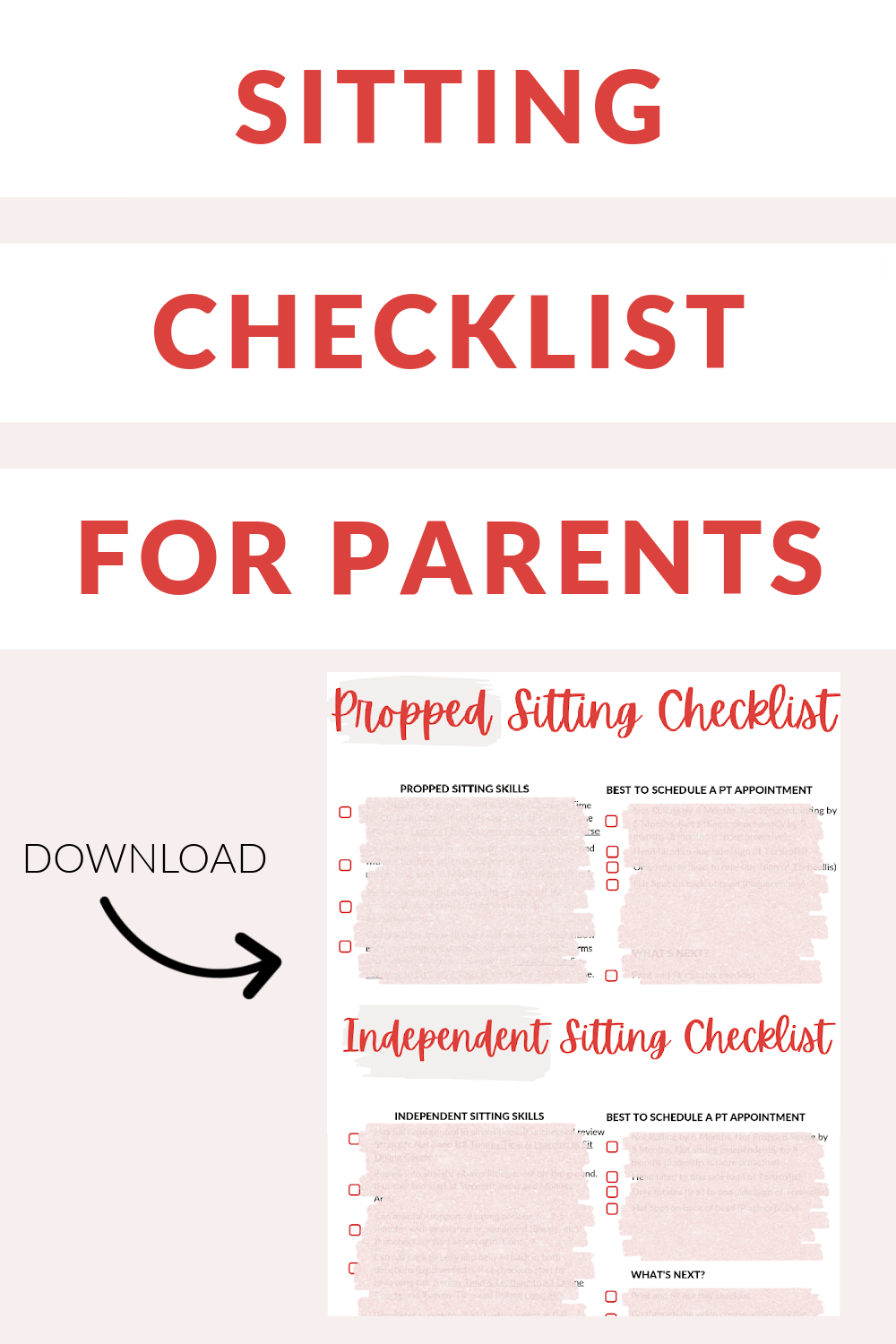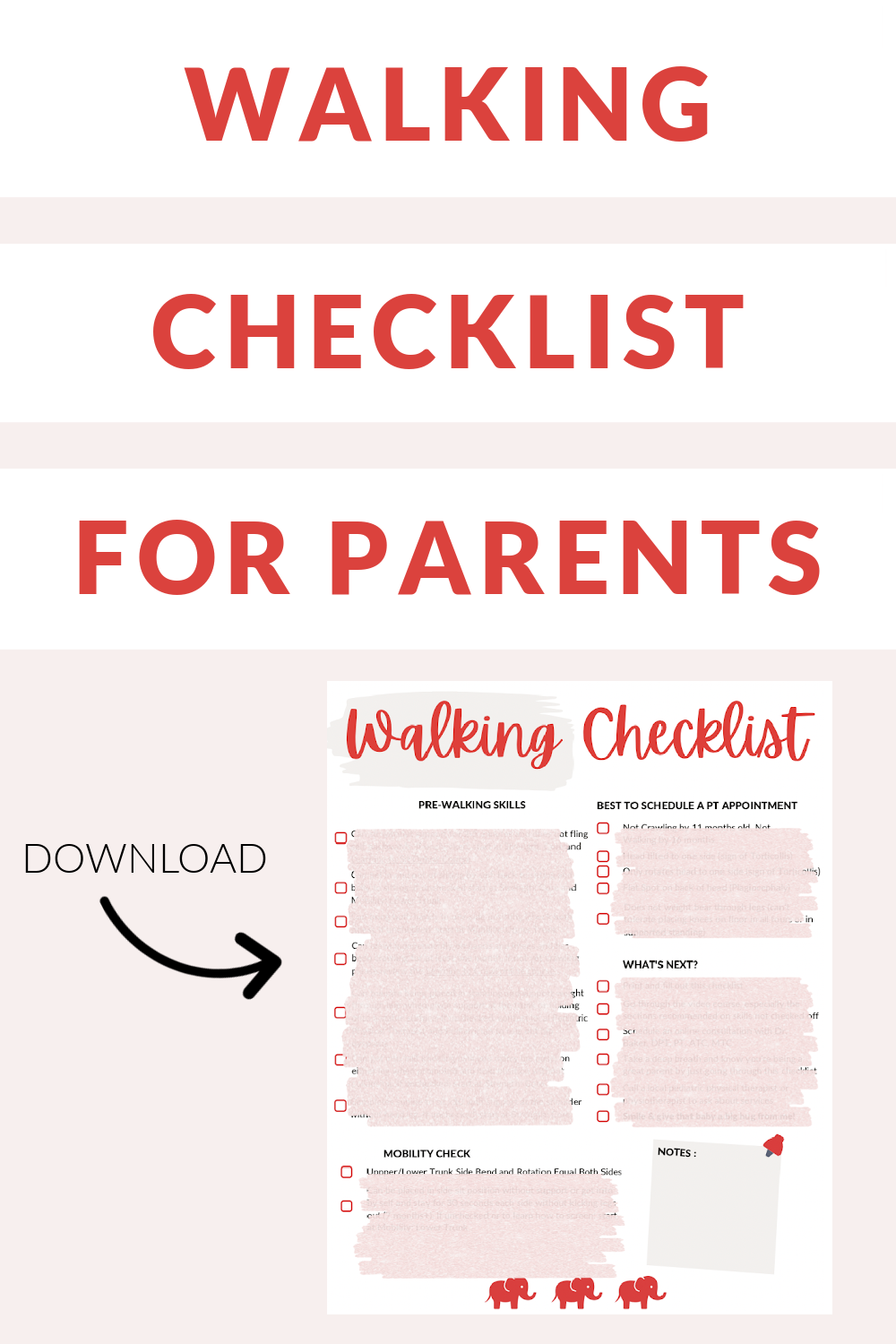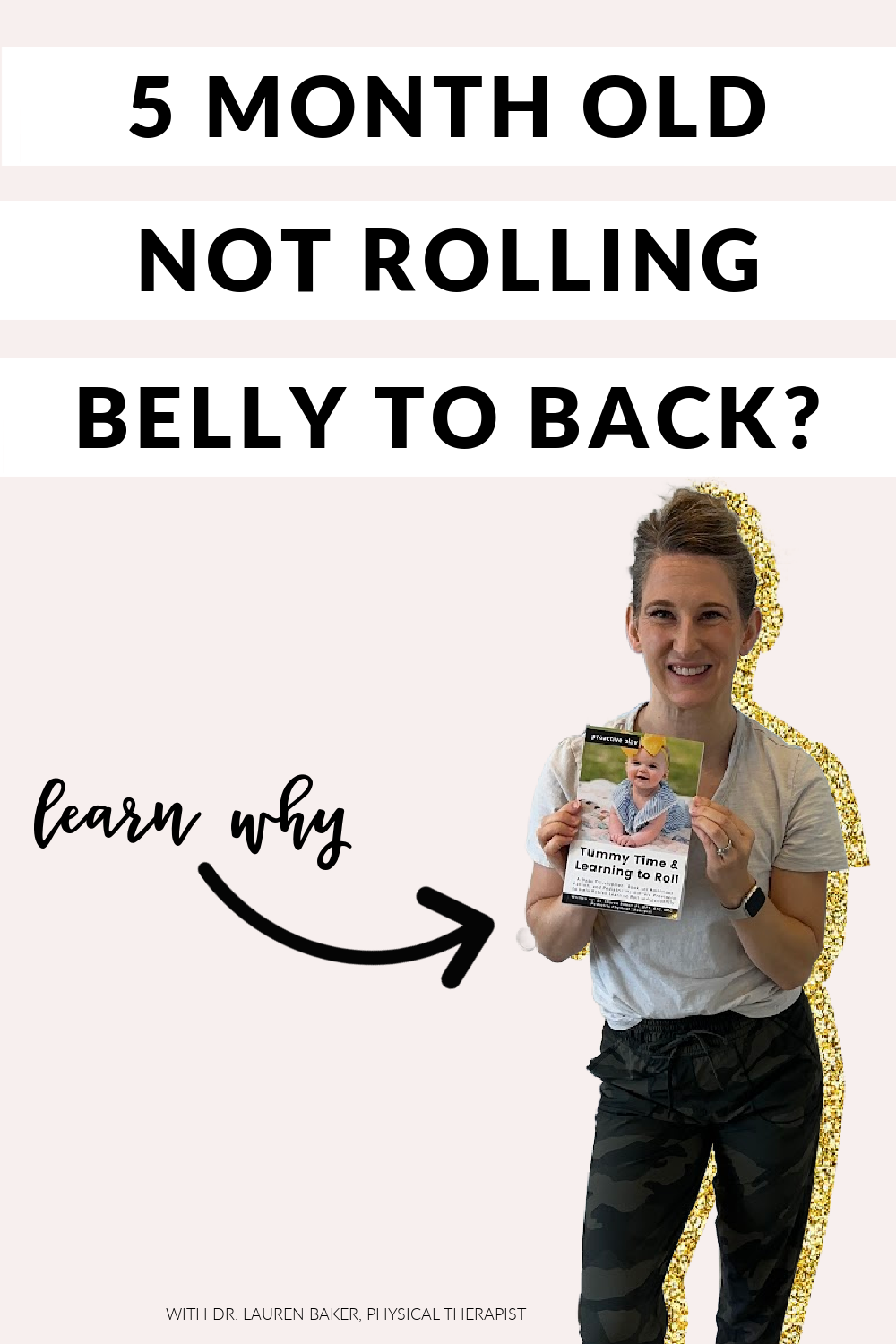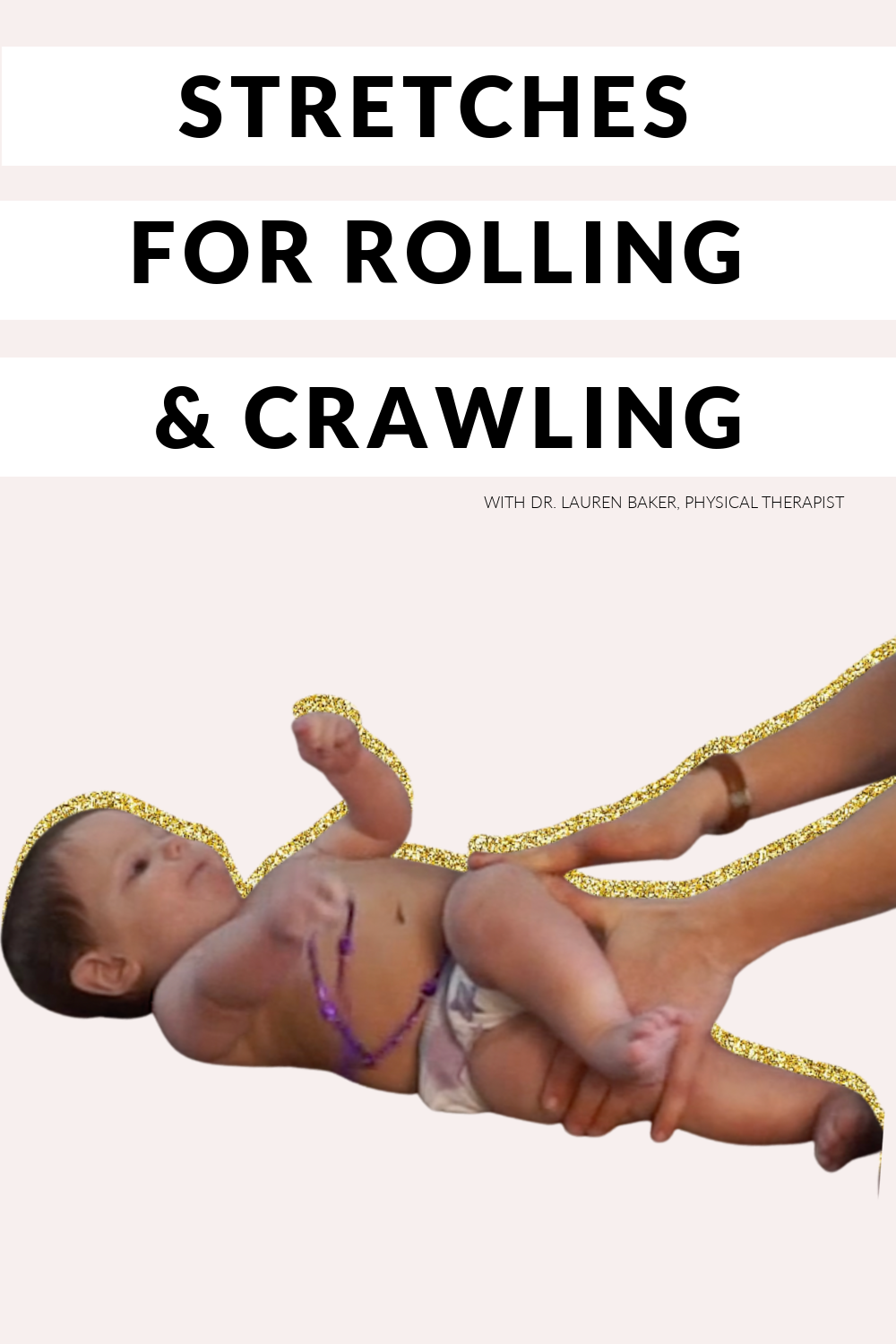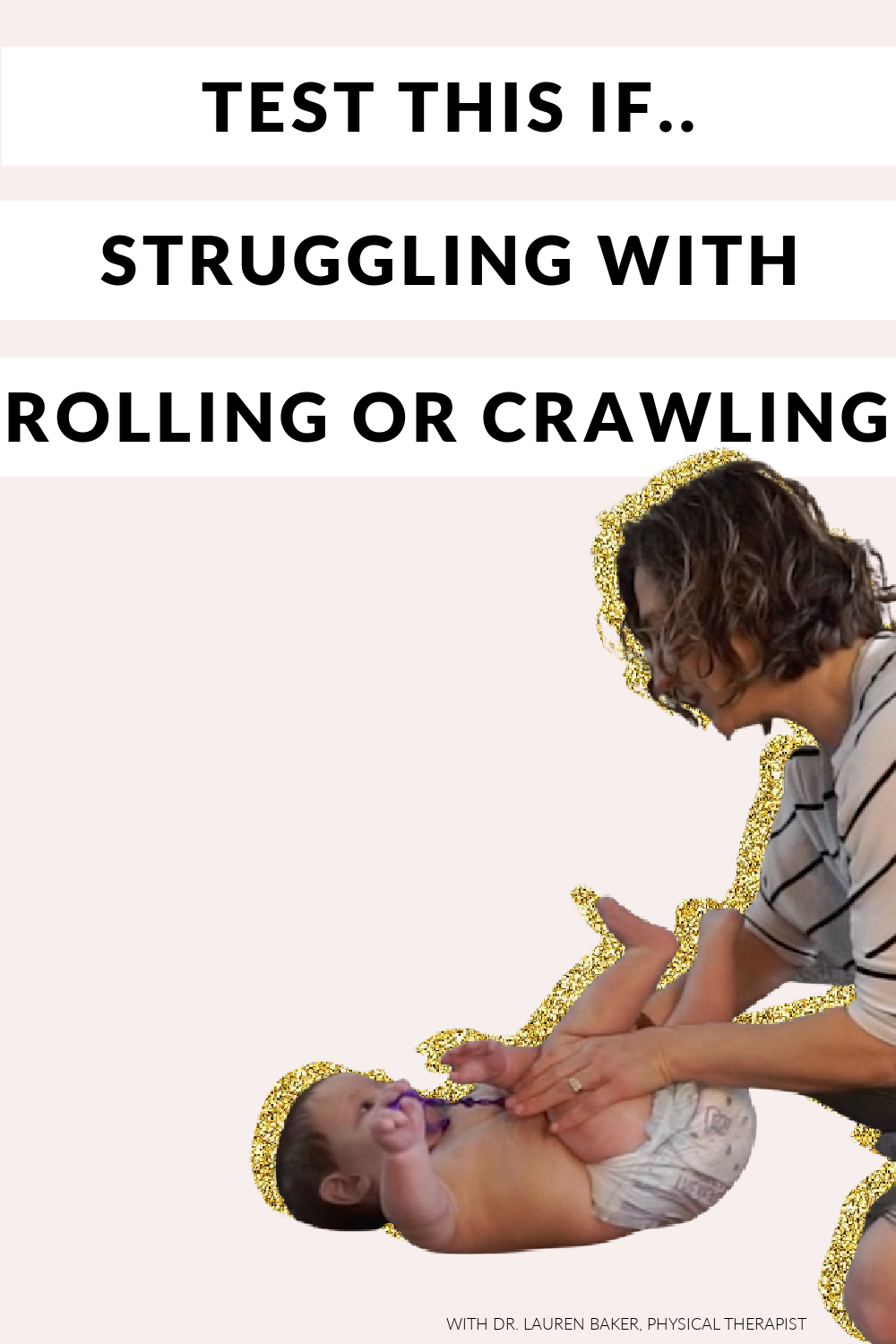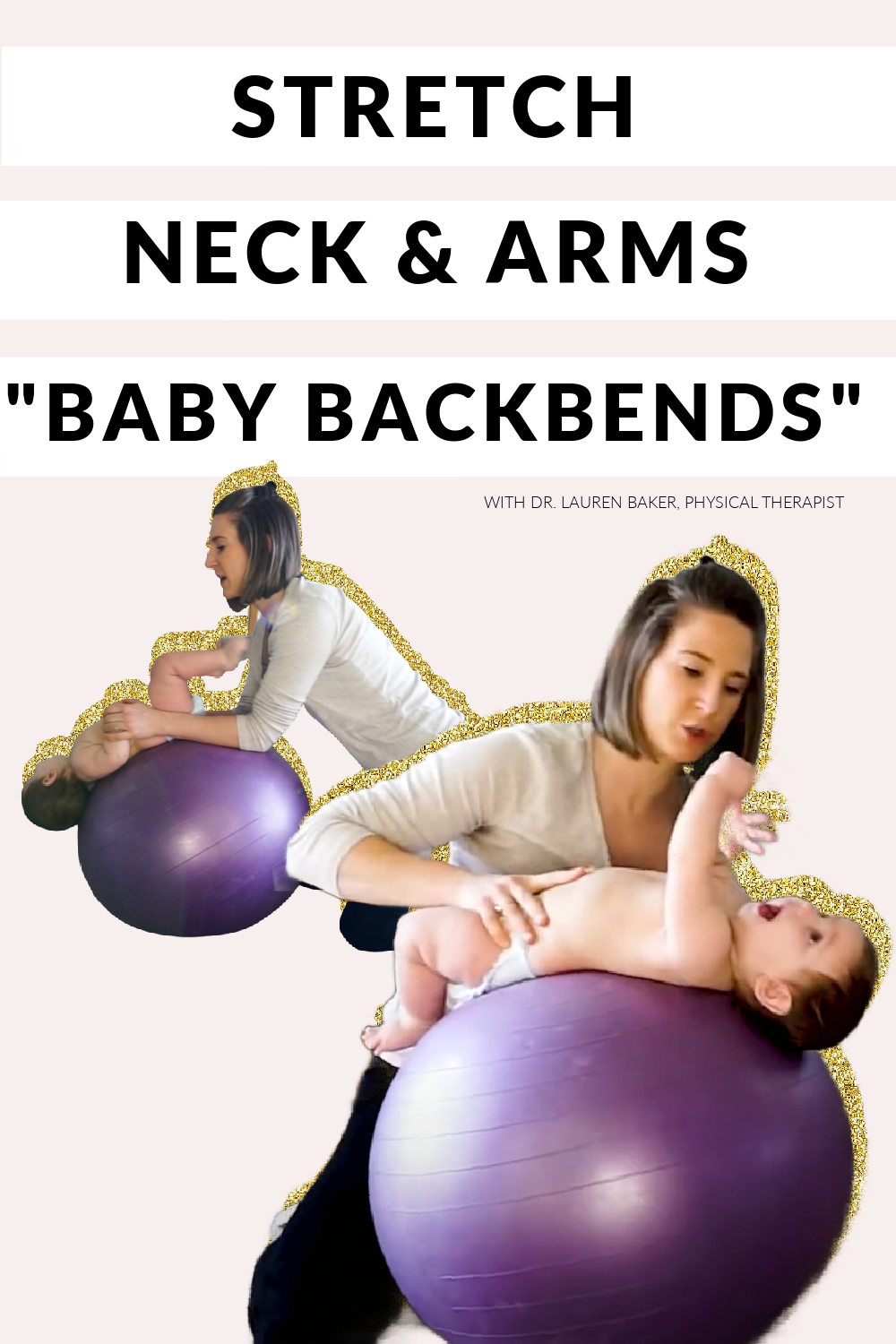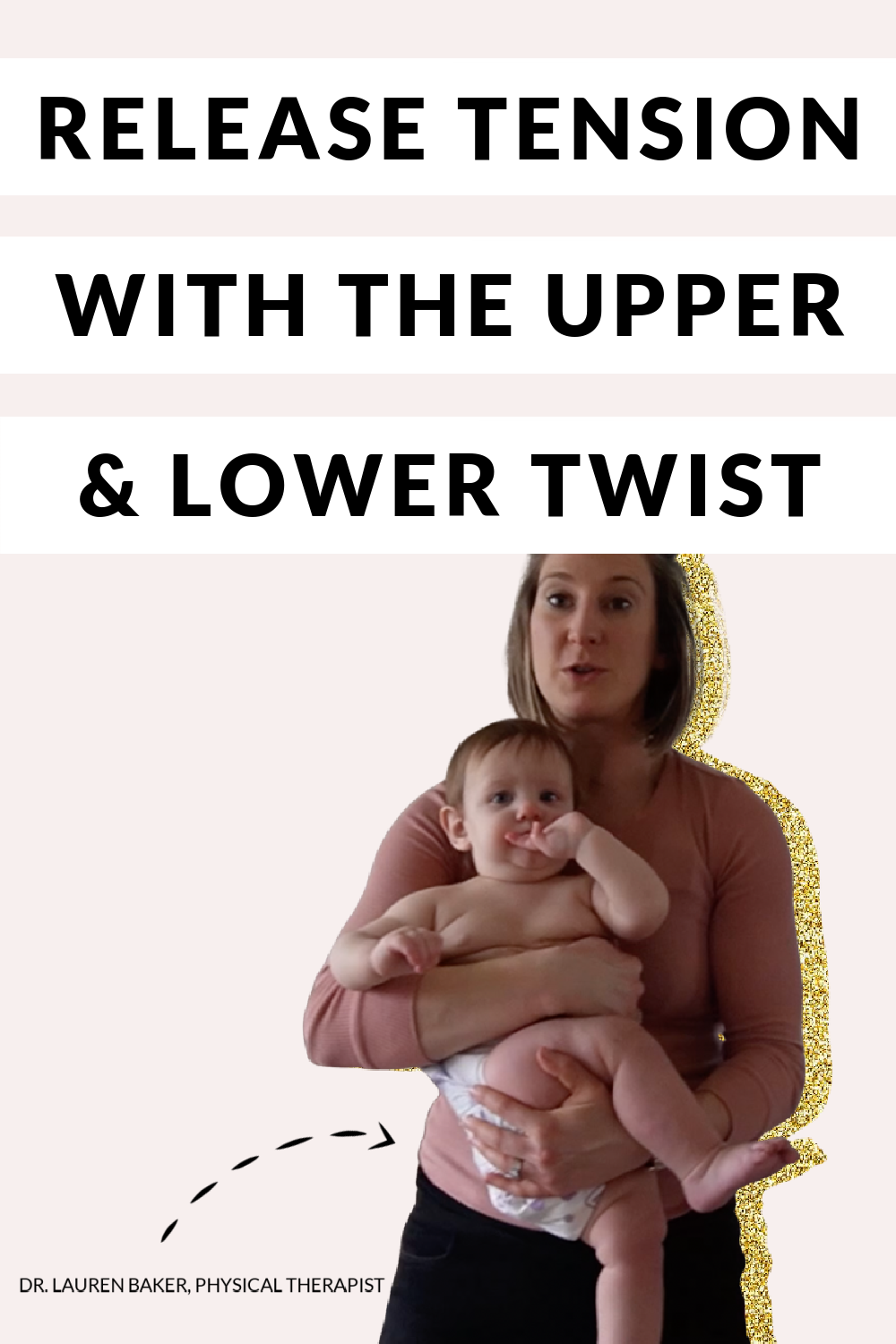How to Check Infant Neck Strength | Torticollis Explained
this blog contains affiliate links
In this blog post we are going to go over how to check for infant neck strength, in infants 3 months+, as well as the best markers for infants < 3 months for neck strength. We are also going to go over torticollis and plagiocephaly (head shape/head flatness) because these both can influence neck strength in infants significantly and all parents need to screen their infants for Torticollis and Plagiocephaly from day one.
Torticollis: A Quick Overview
First things first, let's talk about torticollis. This condition involves a tilt to one side and a rotation to the other, often due to tightness in the sternocleidomastoid muscle. But it's not just a neck issue; it can involve the whole body – from the arms and shoulders down to the pelvis.
Right vs. Left Torticollis: The side of the torticollis is named after the side of the TILT. The sternocleidomastoid muscle tilts to the same side as the muscle, but rotates to the opposite side, which makes it kind of confusing to parents.
Right Torticollis: If your baby has a tilt to the right and rotates more easily to the left, it's the right sternocleidomastoid that's tight.
Left Torticollis: If your baby has a tilt to the left and rotates more easily to the right, it's the left sternocleidomastoid that's tight.
Why Early Intervention Matters
The earlier we catch and address any signs of torticollis or neck weakness, the better. Ideally, babies should be seen by a pediatric physical therapist before they turn one month old. Truthfully though, we are a LONG WAY OFF from this being the norm in the United States (hopefully it’s more common in other countries!).
Most of the time at one month old, parents are barely able to get in to the pediatrician, let alone in to see a Pediatric Physical Therapist or know that this is something that could be beneficial for them.
Luckily, a lot of Pediatric Physical Therapists like myself are sick of parents getting frustrated that they didn’t know they could’ve done something earlier and we are here, hanging out on the internet, trying to get our knowledge in YOUR hands, if you need it.
Early intervention can significantly reduce the amount of therapy needed compared to starting after one month of age.
The national data for Pediatric Physical Therapy results with Torticollis is as follows:
0-1 month: 1.5 months average time of treatment
1-3 months: 5.9 month average time of treatment
3-6 months: 7.9 month average time of treatment
6-12 months: 8.9 month average time of treatment
The good news, though, is that Pediatric Physical Therapists who specialize in infants can often see quicker results in infants who are within the 0-5 month range closer to 3 months average length of weekly Pediatric Physical Therapy with sometimes needed but much less frequent visits up to six months, especially if a child is also receiving craniosacral therapy, chiropractic care, or infant massage.
The take home message is this: the earlier the better, not just because it doesn’t take as long, but also because the baby’s experience is so much easier when they are younger. Tightness in the body does not feel good and older babies can be cranky trying to help them resolve Torticollis and the movement struggles that are caused by unresolved Torticollis.
Plagiocephaly: Linked to Torticollis
Plagiocephaly, or flat head syndrome, often goes hand-in-hand with torticollis. A baby with a rotation preference might develop flatness on one side of their head (the side of the rotation preference), emphasizing the importance of early and proactive physical therapy.
This both make the Torticollis AND the Plagiocephaly worse. They’re like the worst kind of frenemies of new parents.
However, Plagiocephaly can also occur in utero, so monitoring head shape from birth is vitally important, especially because treating head shape without a helmet is only effective if the baby is seen by 3 months (some change possible 4-5 months but much less time to complete program, which results in decreased results and often a referral for a head shape scan/helmet after 5 months).
Testing Head and Neck Strength
Now, let's get into the nitty-gritty – how you can test your baby's head and neck strength at home. This simple check can help you spot any imbalances and take action. I recommend only doing this after the age of 3 months.
Prior to the age of three months, the best test of neck strength is whether a baby can tolerate tummy time and lift their head off the ground to 90 degrees and push through their elbows to lift their chest.
Age-Appropriate Expectations:
At 3 months: babies should keep their head horizontal
3 to 4 months: they should lift it slightly above horizontal
4 to 6 months and beyond: they should lift it significantly above horizontal, increasing in height as they age.
How to Test Neck Strength:
Start facing a mirror or set up your camera (I like the front facing view so you can see if you’re in the frame!).
Right Side Test: Place your right arm through your baby's legs, fingers on their abdomen. Your left arm goes between their bottom arm and chest, supporting them horizontally. Check how far the baby can lift their right ear towards their shoulder, holding for 5 seconds.
Left Side Test: Switch arms for testing the left side. Place your left arm through your baby's legs, fingers on their abdomen. Your right arm goes between their bottom arm and chest, supporting them horizontally. Check how far your baby can lift their left ear towards their shoulder against gravity.
Note if there is any difference side to side, if not, and your baby is consistent with the age recommendations, then your baby likely has equal strength side to side, if there is no rotation preference and no head tilt you are good to go!
If there is a difference side to side, your baby has a head tilt, rotation preference, or flatness in the back of their head a consultation with a Pediatric Physical Therapy is recommended.
Strengthening Exercises
If you find your baby struggles with maintaining head strength in the horizontal position, start in a more vertical position where gravity is less of an enemy. Gradually increase the challenge by tilting them more horizontally as they build strength. This gentle progression helps them develop neck muscle strength comfortably and effectively.
Recommendations for How Long
Start with 5 seconds, then increase to 15-30 seconds at a time for a total of 1-2 minutes split between sides. Always do both sides to make sure that neck strength stays equal.
Resources for Further Help
If you're eager for more detailed guidance or if you've noticed any concerns with your baby's neck strength or symmetry, my latest book, "Tummy Time and Learning to Roll," is a treasure trove of information.
It covers everything from the basics of torticollis and plagiocephaly to comprehensive exercises and strategies for ensuring your baby's development is on the right track.
for the most comprehensive information, including demonstration of how to do the check and exercises please watch the video below.
TIMESTAMPS:
0:47 Torticollis explained: What is torticollis? What does Torticollis look like? What causes Torticollis? Does my baby have right or left Torticollis?
2:03 which side is most common in babies for Torticollis or Plagiocephaly
2:20 when to see a Pediatric Physical Therapist and why you need to be seen by this age for quickest results
3:29 Plagiocephaly explained: why plagiocephaly (flat head in infants) is often associated with Torticollis, what plagiocephaly looks like
6:20 what normal neck strength in infants looks like based on age
8:39 how to check neck strength in infants on the right side
9:25 how to check neck strength in infants on the left side
10:00 how to use this position to increase neck strength in infants
LINKS IN VIDEO:
Physical Therapy Tshirt
Baby Begin for head shape consultations
TOY IDEAS:
Best Toys for Babies Learning to Roll
Best Toys for Babies
PT Approved Equipment/Containers for Babies
Tummy Time Toys
Curious About Learning More on Tummy Time, Rolling, or Both?
The absolute best book for parents on tummy time and rolling is: Tummy Time and Learning to Roll: A Baby Development Book for Ambitious Parents and Pediatric Healthcare Providers to Help Babies Learn to Roll Independently. The book comes with a free online video course to help parents fully understand how to complete the different exercises, printable checklists to know exactly where your baby is at, and when to reach out for additional help.
This book was written by Dr. Lauren Baker, PT, DPT, ATC, MTC, who is a Pediatric Physical Therapist in Boise, Idaho, trained in helping parents learn how to help their babies move and master their milestones. She loves teaching parents how to see how their babies are moving as well as how to influence those movements though play positions and exercises to help babies move with confidence and ease.
Tummy Time and Learning to Roll is the first book in the Proactive Play series written by Pediatric Physical Therapist Dr. Lauren Baker in order to help Ambitious Parents and Pediatric Healthcare Providers learn how to help babies master tummy time and learn to roll. It is meant to help ambitious parents understand baby development from birth to six months (tummy time to rolling).
This book is a mix of easy-to-follow and more in-depth information than is typically found in baby development books because Dr. Baker believes parents deserve to have all the information at their fingertips.
This book breaks down each piece of movement in checklists so that parents know what their babies need for tummy time and rolling. It also covers what areas might limit a child with rolling, why it is so important, and when to seek help from a pediatric PT.
This book comes with colored photos and easy-to-follow demonstration videos that can help parents implement safe, strategic play-based exercises with their babies in 20 minutes per day.
A Great Resource For:
Parents and Pediatric Healthcare Providers of babies 0-6 months
Parents of babies who are struggling with tummy time, rolling back to belly, belly to back, or only to one side
Access to simple, easy-to-follow videos of play positions and exercises
Learning the four pillars of movement needed in order to master rolling
240+ Color Photo Examples of:
Tummy Time, Sidelying, and Back Play
Developmental Toys and Equipment
Hand Placement and Strategic Play Positions
Common Areas of Restriction or Weakness
When To Reach Out For Help
What If You Want Extra Help?
If you have concerns about their movement, remember, you can always reach out to a pediatric physical therapist. It's your right as a parent to advocate for your child's development.
Sometimes, a few tips and tricks are all you need to get your baby moving better. We're here to support you and release those mama worries. If you are looking for in home pediatric physical therapy, check our listing of therapists.
For those eager to learn more or seeking personalized guidance, I offer online video parent consultations internationally which can be scheduled by clicking here. I am dedicated to answering questions and providing tailored play activities for each unique developmental journey.
When Should Babies Receive Pediatric Physical Therapy?
Parents can call and schedule with a Pediatric Physical Therapist at any time, for any concern in all fifty states without a referral from their Pediatrician.
Pediatric Physical Therapy is medically indicated in all babies who are not rolling in all four directions by six months (back to belly over their right arm AND left arm + belly to back over their right arm AND left arm).
Pediatric Physical Therapy is medically indicated if you notice a flat spot on the back of an infants head (possible plagiocephaly), a tilt of their head consistently to one side (ear to shoulder - possible torticollis), or a rotation preference of their neck (consistently look only to the right or left - possible torticollis).
Many Pediatric Physical Therapists including Dr. Baker, can successfully treat flat spots (Plagiocephaly) without a helmet with a combination of therapy and positioning strategies if seen prior to 4 months (0-3 months is ideal). Dr. Baker uses the Baby Begin Method of repositioning.
Flat spots can be due to in-utero positioning, rotational preference (right sided flatness most common) and babies are at an increased risk for flatness if they are male, were breech, multiple birth, premature, have difficulty with tummy time, or are in containers > 2 hr/day.
Final Thoughts
Watching your baby grow and develop is one of life's most beautiful journeys, and being proactive about their physical development can make all the difference. Whether you're testing neck strength, working on exercises, or just seeking more information, remember: you're doing an incredible job. Your baby is so lucky to have you.
For any questions or if you need personalized advice, don't hesitate to reach out. I'm here to support you every step of the way in this amazing adventure of parenthood. Let's ensure our little ones have the strongest start possible, together.
Walking
this page contains affiliate links
Curious About Learning More on How To Teach Babies To Walk Without Support?
The absolute best resource for parents on helping their babies learn to walk with and without support is the free online course: Learning to Walk by Dr. Baker.
To gain immediate access to the online course, click the link above, submit your information, and the online course instructions will be emailed to you directly.
The free online video course is designed to help parents fully understand how to help their children walk with and without support and trouble shoot what building block of walking the child might not have mastered yet.
It comes with video examples of exercises, printable checklists to know exactly where your baby is at, and information on when to reach out for additional help.
This online course was created by Dr. Lauren Baker, PT, DPT, ATC, MTC, who is a Pediatric Physical Therapist in Boise, Idaho, trained in helping parents learn how to help their babies move and master their milestones.
She loves teaching parents how to see how their babies are moving as well as how to influence those movements though play positions and exercises to help babies move with confidence and ease.
It is meant to help ambitious parents understand baby development from 9-18 months (getting in/out of standing, cruising/walking with support to independent walking).
This online course breaks down each piece of movement in checklists so that parents know what their babies need for walking and it also covers a checklist to make sure babies have mastered crawling (otherwise, this could be a reason why walking is still a struggle!)
It also covers what areas might limit a child with walking, how to get in/out of standing, how to walk with and without support, and when to seek help from a pediatric PT.
This online course can help parents implement safe, strategic play-based exercises with their babies in 20 minutes per day.
A Great Resource For:
Parents and Pediatric Healthcare Providers of babies 9-18 months
Parents of babies who are struggling with getting in/out of standing or walking with/without support
Access to simple, easy-to-follow videos of play positions and exercises
Learning the four pillars of movement needed in order to master walking independently
8 Online Course Modules
Building Blocks of Walking
Walking Checklists + Shoe Guides
Getting Into Standing
Cruising and Walking With/Without Support
Strength Exercises
Mobility Exercises
Walking Specific Play Exercises
Next Steps: How to Prep for Jumping & Climbing
What If You Want Extra Help?
If you have concerns about your baby’s ability to pull into standing, cruise (walking while holding onto furniture), or walking independently without support, remember, you can always reach out to a pediatric physical therapist.
It's your right as a parent to advocate for your child's development. Sometimes, a few tips and tricks are all you need to get your baby moving better.
I’m here to support you and release those worries.
For those eager to learn more or seeking personalized guidance, I offer online video parent consultations internationally and Pediatric Physical Therapy in Boise, ID and the Treasure Valley – which you can learn more about by scheduling a free 20 minute chat with me (Idaho only) or an online parent consultation by clicking here.
I am dedicated to answering questions and providing tailored play activities for each unique developmental journey.
When Should A Child Receive Pediatric Physical Therapy?
Parents can call and schedule with a Pediatric Physical Therapist at any time, for any concern in all fifty states without a referral from their Pediatrician.
Pediatric Physical Therapy is medically indicated in all babies who are not walking on their own without support by 18 months. Proactive Pediatric Physical Therapy recommend if a child is not walking on their own by 16 months.
Pediatric Physical Therapy is medically indicated if you notice a flat spot on the back of an infants head (possible plagiocephaly), a tilt of their head consistently to one side (ear to shoulder - possible torticollis), or a rotation preference of their neck (consistently look only to the right or left - possible torticollis).
Flat spots can be due to in-utero positioning, rotational preference (right sided flatness most common) and babies are at an increased risk for flatness if they are male, were breech, multiple birth, premature, have difficulty with tummy time, or are in containers > 2 hr/day. Flat spots can only be treated up until 18 months and success decreases after the age of 12 months.
Jumping
Approximately 6 months after walking independently, children will begin showing signs of attempting to jump on their own.
Once a child is 2-2.5 years old, they are typically able to jump forward 4-23 inches.
If a child is 2.5 years old and have been walking for > 6 months and they are not yet showing signs of jumping (up, down, and forward), there may be strength, power, or coordination skills that they need help acquiring.
One of my favorite ways to work on building lower leg strength and endurance is the toddler squat which can be done supported or having them do it on their own.
What If You Want Extra Help?
If you have concerns about your child’s ability to jump up, down, or forward with/without support, remember, you can always reach out to a pediatric physical therapist.
It's your right as a parent to advocate for your child's development. Sometimes, a few tips and tricks are all you need to get your child moving and more confident in their coordination.
I’m here to support you and release those worries.
For those eager to learn more or seeking personalized guidance, I offer online video parent consultations internationally and Pediatric Physical Therapy in Boise, ID and the Treasure Valley – which you can learn more about by scheduling a free 20 minute chat with me (Idaho only) or an online parent consultation by clicking here.
When Should A Child Receive Pediatric Physical Therapy?
Parents can call and schedule with a Pediatric Physical Therapist at any time, for any concern in all fifty states without a referral from their Pediatrician.
Pediatric Physical Therapy is medically indicated in children who are showing significant signs of struggle with jumping at 2.5 years, are not jumping forward 4 inches by 3 years, not jumping down from a 12 inch height and landing with both feet at the same time by 3 years, or not jumping 1-2 inches off the ground by 3 years.
Stairs
Climbing skills begin as babies, when they crawl over objects on the floor and get on/off of elevated surfaces such as play equipment or a couch/chair.
Babies who skip crawling are at risk for having difficulty with climbing up and down stairs as they did not have the hip, leg, and core strengthening opportunities of their crawling peers.
Children who always lead with one foot when going up the stairs and with the other foot when going down stairs are potentially showing signs that one side of their body is stronger or more balanced than the other.
For example, if a child uses their right leg when going up the stairs and their left leg going down the stairs, their right leg is potentially stronger than their left leg. If they can do the opposite direction when prompted, there is less concern, but if they refuse or cannot without assistance, the left leg may be weaker than the right.
Children should be able to walk up stairs without holding on by 2.5 years (either with one foot or two feet on a step).
Typically, children should be able to walk up with either leg when prompted using one foot on each step by 3-3.75 years of age.
If a child is struggling with stepping up with one leg but not the other, try this activity to increase strength and confidence in the leg they tend to avoid using.
What If You Want Extra Help?
If you have concerns about your child’s ability to climb up or down stairs with/without support, remember, you can always reach out to a pediatric physical therapist.
It's your right as a parent to advocate for your child's development. Sometimes, a few tips and tricks are all you need to get your child moving and more confident in their coordination.
I’m here to support you and release those worries.
For those eager to learn more or seeking personalized guidance, I offer online video parent consultations internationally and Pediatric Physical Therapy in Boise, ID and the Treasure Valley – which you can learn more about by scheduling a free 20 minute chat with me (Idaho only) or an online parent consultation by clicking here.
When Should A Child Receive Pediatric Physical Therapy?
Parents can call and schedule with a Pediatric Physical Therapist at any time, for any concern in all fifty states without a referral from their Pediatrician.
Pediatric Physical Therapy is medically indicated in children who are showing significant signs of struggle with stairs at 2 years, are not going up/down stairs with support using both legs by 2.5 years (either with one foot or two feet on a step), not walking up stairs with one foot on each step without support by 3 years, or not walking down stairs with one foot on each step without support by 4 years of age.
Throwing & Catching
If a child is having difficulty with throwing/catching, it could be due to difficulty with coordinating their eyeballs!
When a ball comes toward a child, their eyeballs need to come together in order for them to accurately catch a ball.
If you notice a child closing their eyes as the ball comes toward them, they do not yet have the coordination of their eyeballs coming together, so they close their eyes instead.
This decreases their accuracy and often the ball will bounce off their chest or arms instead of them catching it.
try this activity with your child to train their eyeballs (kids love it! and you can even have them do it to you too!).
What If You Want Extra Help?
If you have concerns about your child’s ability to throw a ball overhand, underhand, or catch a ball, remember, you can always reach out to a pediatric physical therapist.
It's your right as a parent to advocate for your child's development. Sometimes, a few tips and tricks are all you need to get your child moving and more confident in their coordination.
I’m here to support you and release those worries.
For those eager to learn more or seeking personalized guidance, I offer online video parent consultations internationally and Pediatric Physical Therapy in Boise, ID and the Treasure Valley – which you can learn more about by scheduling a free 20 minute chat with me (Idaho only) or an online parent consultation by clicking here.
I am dedicated to answering questions and providing tailored play activities for each unique developmental journey.
When Should A Child Receive Pediatric Physical Therapy?
Parents can call and schedule with a Pediatric Physical Therapist at any time, for any concern in all fifty states without a referral from their Pediatrician.
Pediatric Physical Therapy is medically indicated in children who are not throwing/catching by 3-4 years old.
Crawling
this page contains affiliate links
Curious About Learning More on How To Teach Babies Crawl?
The absolute best resource for parents on helping their babies learn to crawl is the free online course: Learning to Crawl by Dr. Baker.
To gain immediate access to the online course, click the link above, submit your information, and the online course instructions will be emailed to you directly.
The free online video course is designed to help parents fully understand how to help their children crawl on hands and knees and trouble shoot what building block of crawling the child might not have mastered yet.
It comes with video examples of exercises, printable checklists to know exactly where your baby is at, and information on when to reach out for additional help.
This online course was created by Dr. Lauren Baker, PT, DPT, ATC, MTC, who is a Pediatric Physical Therapist in Boise, Idaho, trained in helping parents learn how to help their babies move and master their milestones.
She loves teaching parents how to see how their babies are moving as well as how to influence those movements though play positions and exercises to help babies move with confidence and ease.
It is meant to help ambitious parents understand baby development from 9-11 months (getting in/out of all fours to independent crawling).
This online course breaks down each piece of movement in checklists so that parents know what their babies need for crawling and it also covers a checklist to make sure babies have mastered rolling and sitting (otherwise, this could be a reason why sitting is still a struggle!)
It also covers what areas might limit a child with crawling, examples of disadvantageous ways babies might crawl, why hands/knees crawling is best, and when to seek help from a pediatric PT.
This online course can help parents implement safe, strategic play-based exercises with their babies in 20 minutes per day.
A Great Resource For:
Parents and Pediatric Healthcare Providers of babies 7-11 months
Parents of babies who are struggling with getting in/out of all fours or hands/knees crawling
Access to simple, easy-to-follow videos of play positions and exercises
Learning the four pillars of movement needed in order to master crawling
8 Online Course Modules
Building Blocks of Crawling
Crawling Checklists
Getting Into All Fours
Asymmetrical Crawling Patterns
Strength Exercises
Mobility Exercises
Crawling Specific Play Exercises
Next Steps: How to Prep for Walking
What If You Want Extra Help?
If you have concerns about your baby’s ability to tolerate an all fours position, have what they need to master crawling on hands/knees, or if they are not getting into all fours by themselves and are over 11 months, remember, you can always reach out to a pediatric physical therapist.
It's your right as a parent to advocate for your child's development. Sometimes, a few tips and tricks are all you need to get your baby moving better.
I’m here to support you and release those worries.
For those eager to learn more or seeking personalized guidance, I offer online video parent consultations internationally and Pediatric Physical Therapy in Boise, ID and the Treasure Valley – which you can learn more about by scheduling a free 20 minute chat with me (Idaho only) or an online parent consultation by clicking here.
I am dedicated to answering questions and providing tailored play activities for each unique developmental journey.
When Should Babies Receive Pediatric Physical Therapy?
Parents can call and schedule with a Pediatric Physical Therapist at any time, for any concern in all fifty states without a referral from their Pediatrician.
Pediatric Physical Therapy is medically indicated in all babies who are not crawling on hands/knees on their own by 11 months. Proactive Pediatric Physical Therapy recommend if a child is not crawling on their own by 10 months.
Pediatric Physical Therapy is medically indicated if you notice a flat spot on the back of an infants head (possible plagiocephaly), a tilt of their head consistently to one side (ear to shoulder - possible torticollis), or a rotation preference of their neck (consistently look only to the right or left - possible torticollis).
Flat spots can be due to in-utero positioning, rotational preference (right sided flatness most common) and babies are at an increased risk for flatness if they are male, were breech, multiple birth, premature, have difficulty with tummy time, or are in containers > 2 hr/day.
Sitting: with & without support
this page contains affiliate links
Curious About Learning More on How To Teach Babies To Sit On Their Own?
The absolute best resource for parents on helping their babies learn to sit is the free online course: Learning to Sit by Dr. Baker.
To gain immediate access to the online course, click the link above, submit your information, and the online course instructions will be emailed to you directly.
The free online video course is designed to help parents fully understand how to help their children sit independently and trouble shoot what building block of sitting the child might not have mastered yet.
It comes with video examples of exercises, printable checklists to know exactly where your baby is at, and information on when to reach out for additional help.
This online course was created by Dr. Lauren Baker, PT, DPT, ATC, MTC, who is a Pediatric Physical Therapist in Boise, Idaho, trained in helping parents learn how to help their babies move and master their milestones.
She loves teaching parents how to see how their babies are moving as well as how to influence those movements though play positions and exercises to help babies move with confidence and ease.
It is meant to help ambitious parents understand baby development from 4-9 months (propped to independent sitting).
This online course breaks down each piece of movement in checklists so that parents know what their babies need for sitting and it also covers a checklist to make sure babies have mastered rolling in all directions (otherwise, this could be a reason why sitting is still a struggle!)
It also covers what areas might limit a child with sitting, why it is so important, and when to seek help from a pediatric PT.
This online course can help parents implement safe, strategic play-based exercises with their babies in 20 minutes per day.
A Great Resource For:
Parents and Pediatric Healthcare Providers of babies 4-9 months
Parents of babies who are struggling with sitting with or without support
Access to simple, easy-to-follow videos of play positions and exercises
Learning the four pillars of movement needed in order to master sitting
8 Online Course Modules
Building Blocks of Sitting
Sitting Checklists
Propped Sitting/Sitting with Support
Independent Sitting
Strength Exercises
Mobility Exercises
Sitting Specific Play Exercises
Next Steps: How to Prep for Crawling
What If You Want Extra Help?
If you have concerns about your baby’s ability to tolerate a sitting position, have what they need to master sitting without support, or if they are not sitting by themselves and are over nine months, remember, you can always reach out to a pediatric physical therapist.
It's your right as a parent to advocate for your child's development. Sometimes, a few tips and tricks are all you need to get your baby moving better.
I’m here to support you and release those worries.
For those eager to learn more or seeking personalized guidance, I offer online video parent consultations internationally and Pediatric Physical Therapy in Boise, ID and the Treasure Valley – which you can learn more about by scheduling a free 20 minute chat with me (Idaho only) or an online parent consultation by clicking here.
I am dedicated to answering questions and providing tailored play activities for each unique developmental journey.
When Should Babies Receive Pediatric Physical Therapy?
Parents can call and schedule with a Pediatric Physical Therapist at any time, for any concern in all fifty states without a referral from their Pediatrician.
Pediatric Physical Therapy is medically indicated in all babies who are not sitting on their own, without support or their hands by nine months. Proactive Pediatric Physical Therapy recommend if a child is not sitting on their own by 8 months.
Pediatric Physical Therapy is medically indicated if you notice a flat spot on the back of an infants head (possible plagiocephaly), a tilt of their head consistently to one side (ear to shoulder - possible torticollis), or a rotation preference of their neck (consistently look only to the right or left - possible torticollis).
Flat spots can be due to in-utero positioning, rotational preference (right sided flatness most common) and babies are at an increased risk for flatness if they are male, were breech, multiple birth, premature, have difficulty with tummy time, or are in containers > 2 hr/day.













